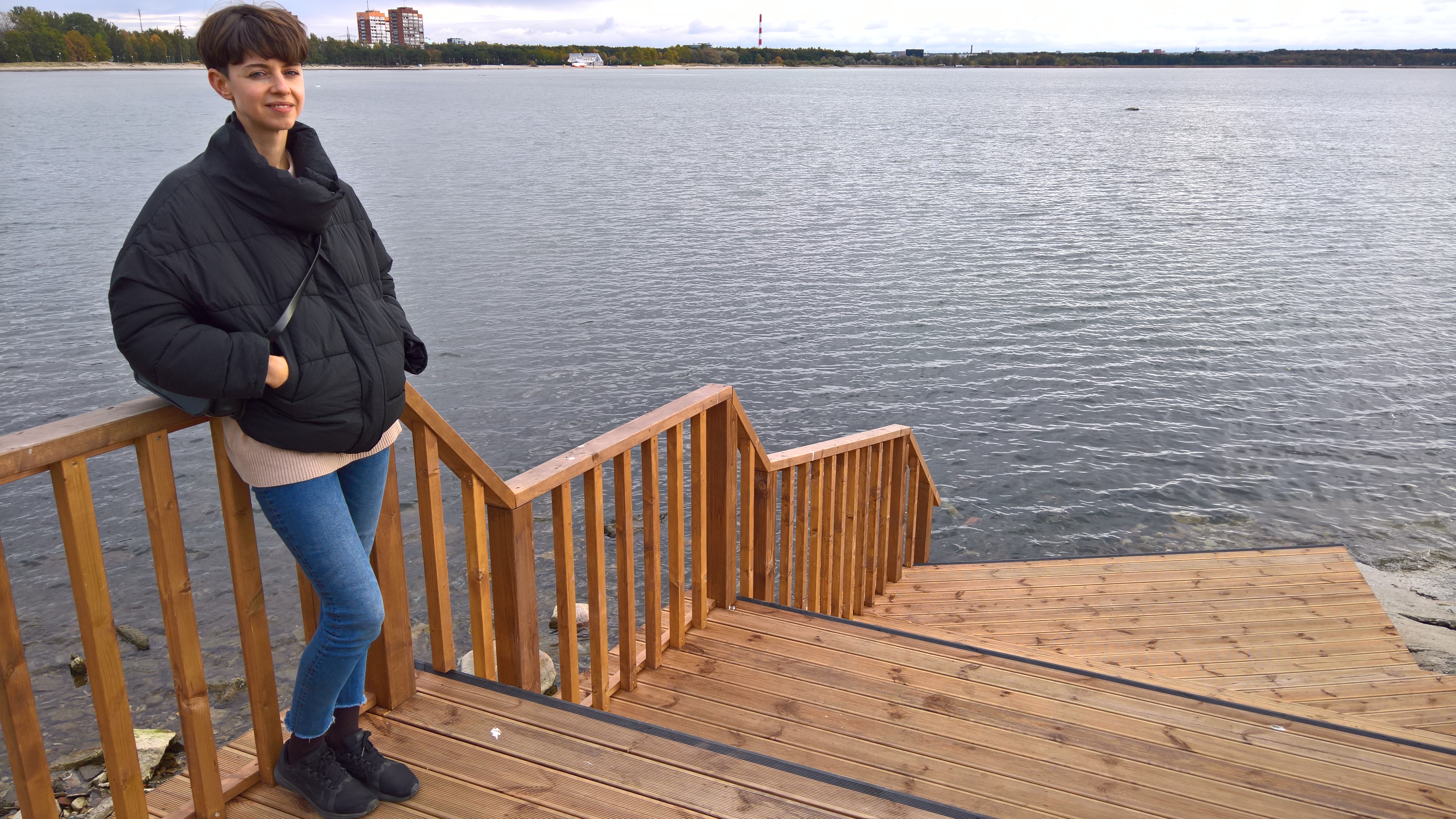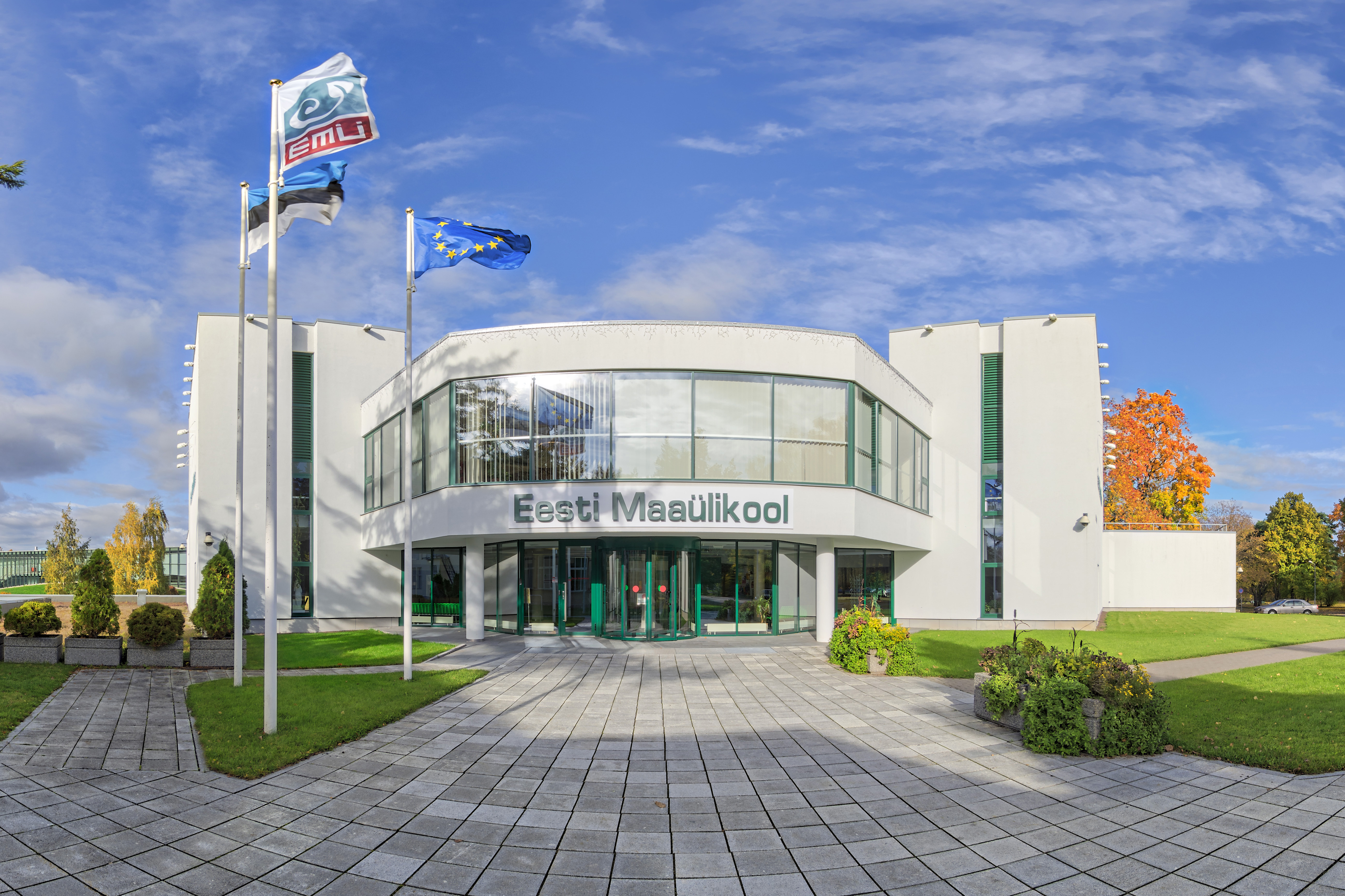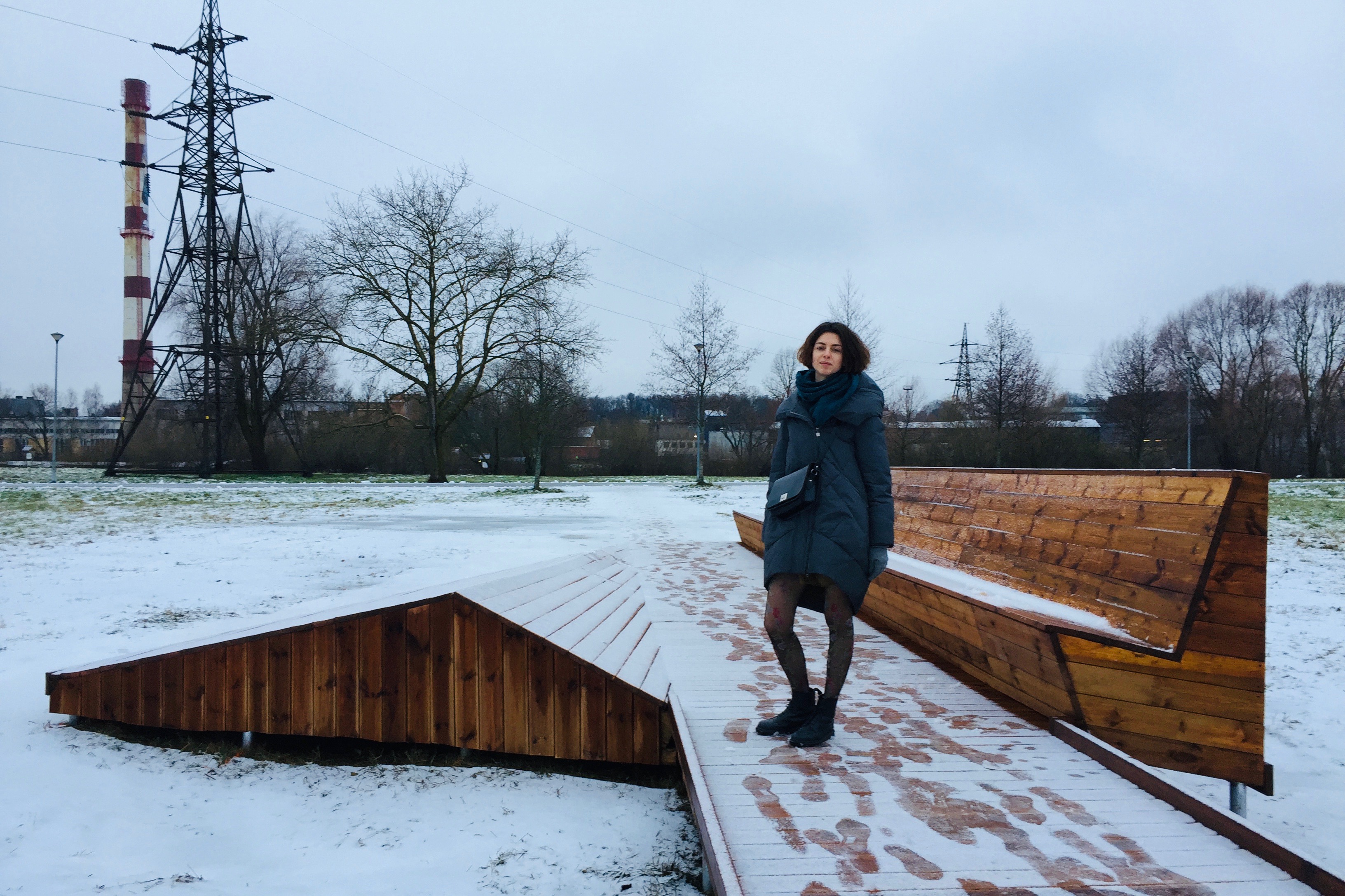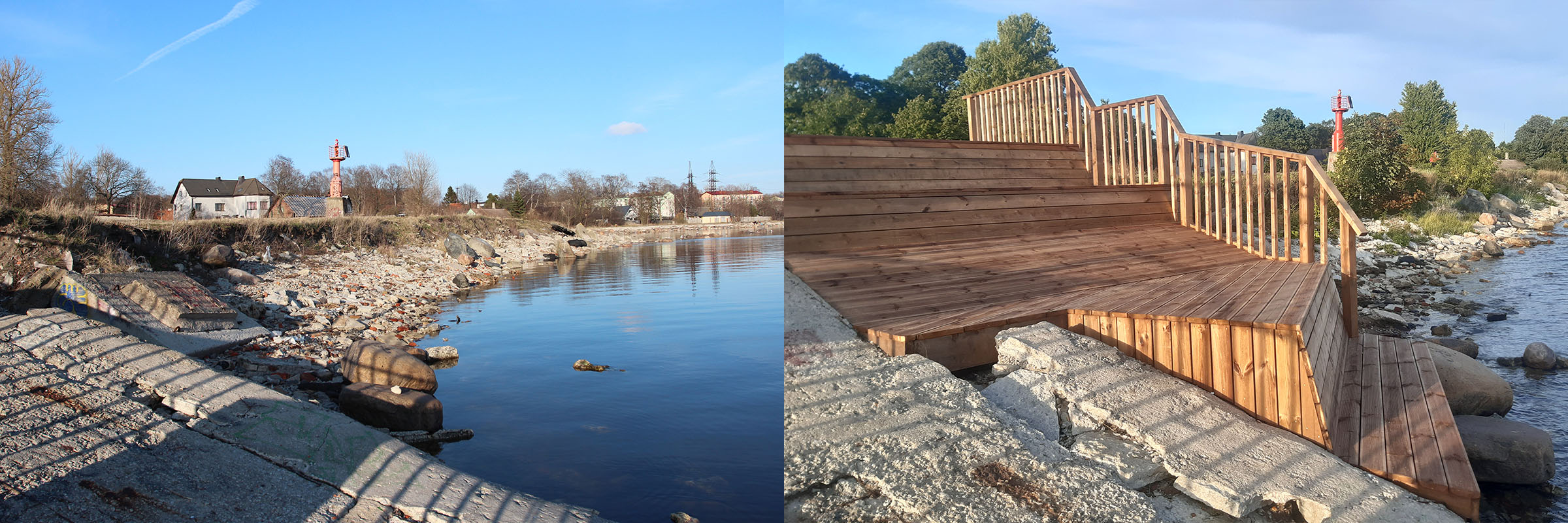
Jekaterina at Kopliranna area in Tallinn. Photo: Jekaterina Balicka
Jekaterina Balicka’s story with Estonia began after she had graduated with a degree in Landscape Architecture in Latvia. “Back then, I didn’t know much about international higher education in Estonia, but I knew some people from the teaching staff and the students”, Jekaterina begins our interview. “I had been planning on studying elsewhere abroad, but my plan had to be adjusted for personal reasons”. One day in July, she set her eyes at the master’s degree in Landscape Architecture at the Estonian University of Life Sciences (Eesti Maaülikool, EMÜ). Since the English-language programme did not exist before that time, Jekaterina joined the first international group of full-time students at EMÜ’s Landscape Architecture department. As you might have guessed, the programme was a success: in 2010, Jekaterina finished her master’s studies and joined the university’s teaching and research team as a PhD candidate in Landscape Architecture.
Coming to Estonia
There are always things to consider when moving to another country. “In my case, there was no culture shock as such, but I did have to adjust to the local mentality”, Jekaterina says. “At the same time, that was one of the reasons why I stayed to work at the university. Our team has a very warm and friendly atmosphere. It has been my social core ever since the first days in Estonia. Even today, my friendship circle doesn’t go much beyond the group of my colleagues or former students. I had to find my way to go further than that. Perhaps that is the main social struggle I have faced”.
Landscape Architecture: a Roadmap
According to Jekaterina, who has experience in both studying and teaching at the department, the programme has been thoroughly adjusted and improved over the course of 12 years. It welcomes undergraduate students of Landscape Architecture and those with a background in related fields, such as Architecture, Engineering, Geography, etc. In order to keep up with the current trends and meet the needs of the industry, the curriculum represents three teaching blocks. First, in the theoretical block, it explores the underlying theory and key concepts of Landscape Architecture and related fields. Second, in the professional context, Design and Planning disciplines teach students to apply the academic knowledge in practice. Finally, Outdoor Planning places a special emphasis on the recreational values of green areas and plays a central part in many research projects.

Main entrance of Estonian University of Life Sciences. Photo: Estonian University of Life Sciences
“The need for competent landscape architects goes well beyond Estonia: about half of our master’s students usually come from abroad”, Jekaterina shares. “It’s a manifold course that aims to look at Landscape Architecture from different perspectives and prepares a wide spectrum of specialists. It is a booming field”. According to the standards, a person with five years of studying, which entails a bachelor’s and a master’s degree, can be called a landscape architect or a landscape planner, depending on the country. If fresh graduates are motivated to boost their careers and dedicate some time to an internship, many European companies will be interested in hiring young professionals for entry-level positions. “Nowadays, cities recognize the importance of urban public spaces and green areas, and they need specialists to be in charge of that”, Jekaterina explains. “The job market includes Landscape Architect positions in the corporate sector and municipalities or in the related field of sustainable development, such as renewable energy or sustainable tourism, for instance. Finally, of course, it’s research”.
As a student and later a lecturer and researcher, Jekaterina has discovered a high level of self-reflection defining the department’s teaching mission. “We always try to get feedback from our students when it comes to teaching and adapt our courses based on that”, she says. “After each semester, a student-staff committee discusses what went right or wrong, and how we can adapt to a certain situation. The pandemic crisis has been a good example of that: we adapted very fast and the online transition took us only one week. We managed well, and the study outcomes were surprisingly good. Perhaps it was due to the COVID-19 or thanks to one-on-one consultations”.
BlueHealth and Doctoral Research
Since 2011, parallel to her PhD work, Jekaterina was involved in several research, applied research and educational projects. In 2016, Jekaterina became a part of the research team of BlueHealth project, that explores the effects of urban blue spaces on people’s wellbeing, and is funded by European Union’s Horizon 2020 research and innovation programme. Originally focusing on the temporary use of abandoned urban spaces, Jekaterina's doctoral thesis topic has shifted towards the use of urban wastelands. “My case studies are Riga and Tallinn. Although some large urban areas are not considered as green areas officially, they are usually rich in natural diversity and offer the same recreational potential as designated green areas, such as parks”, she explains.

Anne canal in Tartu after BlueHealth intervention, December 2018. Photo by: Jekaterina Balicka
In the case of Tallinn, there appears to be not much access to the sea due to a limited number of formal green areas along the shore. “We have been recently looking at the recreational use of different wastelands in the city. We have found out that they seem much more marginal than they are in reality, they are predominantly used for recreational activities”, Jekaterina shares. EMÜ researchers are the only landscape architects working in BlueHealth, apart from the epidemiologists, medical doctors and researchers with other professional background. They have been contributing to the design and implementation of the community-level interventions and collaborating on the development and implementation of the environmental assessment tool and on reviewing its outcomes. “I am currently working on connecting the BlueHealth knowledge with my PhD research on informal green areas and the water. It has been an amazingly interesting and meaningful project”, she admits.

Kopliranna area in Tallinn pre and post BlueHealth intervention, September 2019. Photos: Jekaterina Balicka
Studying in Estonia: What to Know
“I would suggest coming with a clear goal in mind: why do you need this education? What’s your career plan afterwards? What would be the application of your knowledge gained at the university? Answers to these questions will also help you determine your academic curriculum, from the core to the optional subjects. At our department, there’s also a choice between a practical and a theoretical thesis, depending on the student’s career objectives. I would also recommend completing an internship. Otherwise, in our small, but highly international department, we can afford to spend a lot of time on the student-staff communication and tutoring. It means that you can come with an individual request and be sure that it will be taken into consideration. We don’t even have large lecture halls — it’s a very personal teaching approach”.
Text: Anastasiia Starchenko
